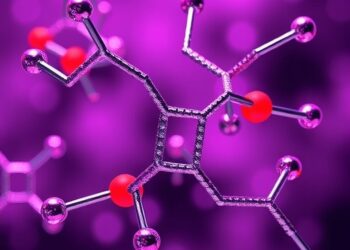Collagen, a protein found in bones and connective tissue, has been found in dinosaur fossils as old as 195 million years. That far exceeds the normal half-life of the peptide bonds that hold proteins together, which is about 500 years.
Collagen, a protein found in bones and connective tissue, has been found in dinosaur fossils as old as 195 million years. That far exceeds the normal half-life of the peptide bonds that hold proteins together, which is about 500 years.
A new study from MIT offers an explanation for how collagen can survive for so much longer than expected. The research team found that a special atomic-level interaction defends collagen from attack by water molecules. This barricade prevents water from breaking the peptide bonds through a process called hydrolysis.
“We provide evidence that that interaction prevents water from attacking the peptide bonds and cleaving them. That just flies in the face of what happens with a normal peptide bond, which has a half-life of only 500 years,” says Ron Raines, the Firmenich Professor of Chemistry at MIT.
Raines is the senior author of the new study, which will appear in ACS Central Science. MIT postdoc Jinyi Yang PhD ’24 is the lead author of the paper. MIT postdoc Volga Kojasoy and graduate student Gerard Porter are also authors of the study.
Water-resistant
Collagen is the most abundant protein in animals, and it is found in not only bones but also skin, muscles, and ligaments. It’s made from long strands of protein that intertwine to form a tough triple helix.
“Collagen is the scaffold that holds us together,” Raines says. “What makes the collagen protein so stable, and such a good choice for this scaffold, is that unlike most proteins, it’s fibrous.”
In the past decade, paleobiologists have found evidence of collagen preserved in dinosaur fossils, including an 80-million-year-old Tyrannosaurus rex fossil, and a sauropodomorph fossil that is nearly 200 million years old.
Over the past 25 years, Raines’ lab has been studying collagen and how its structure enables its function. In the new study, they revealed why the peptide bonds that hold collagen together are so resistant to being broken down by water.
Peptide bonds are formed between a carbon atom from one amino acid and a nitrogen atom of the adjacent amino acid. The carbon atom also forms a double bond with an oxygen atom, forming a molecular structure called a carbonyl group. This carbonyl oxygen has a pair of electrons that don’t form bonds with any other atoms. Those electrons, the researchers found, can be shared with the carbonyl group of a neighboring peptide bond.
Because this pair of electrons is being inserted into those peptide bonds, water molecules can’t also get into the structure to disrupt the bond.
To demonstrate this, Raines and his colleagues created two interconverting mimics of collagen — the one that usually forms a triple helix, which is known as trans, and another in which the angles of the peptide bonds are rotated into a different form, known as cis. They found that the trans form of collagen did not allow water to attack and hydrolyze the bond. In the cis form, water got in and the bonds were broken.
“A peptide bond is either cis or trans, and we can change the cis to trans ratio. By doing that, we can mimic the natural state of collagen or create an unprotected peptide bond. And we saw that when it was unprotected, it was not long for the world,” Raines says.
“No weak link”
This sharing of electrons has also been seen in protein structures known as alpha helices, which are found in many proteins. These helices may also be protected from water, but the helices are always connected by protein sequences that are more exposed, which are still susceptible to hydrolysis.
“Collagen is all triple helices, from one end to the other,” Raines says. “There’s no weak link, and that’s why I think it has survived.”
Previously, some scientists have suggested other explanations for why collagen might be preserved for millions of years, including the possibility that the bones were so dehydrated that no water could reach the peptide bonds.
“I can’t discount the contributions from other factors, but 200 million years is a long time, and I think you need something at the molecular level, at the atomic level in order to explain it,” Raines says.
The research was funded by the National Institutes of Health and the National Science Foundation.
###
Written by Anne Trafton, MIT News
Paper: “Pauli Exclusion by n→π* Interactions: Implications for Paleobiology”
Journal
ACS Central Science
Article Title
Pauli Exclusion by n→π* Interactions: Implications for Paleobiology
Article Publication Date
4-Sep-2024




